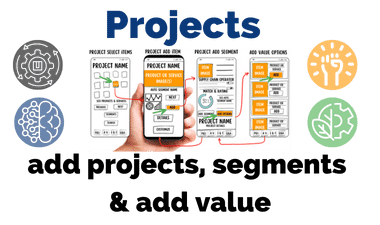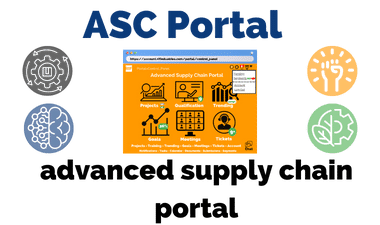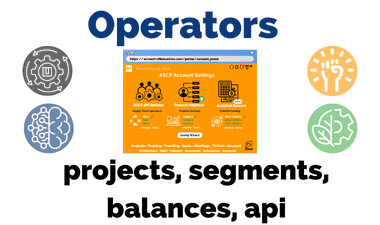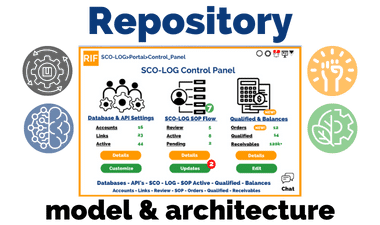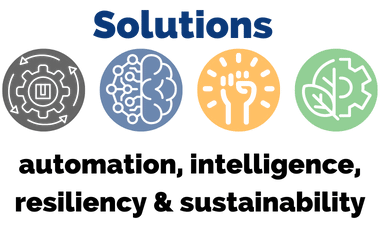
Innovation and disruption are the new norm. Decentralization and Open Source solutions can create a more efficient operational model for the supply chain including releasing resources for development and integration of next generation technology including automation, artificial intelligence (AI) and machine learning (ML).
The focus is the future beyond what was accomplished in 2009 including hyperautomation, the digital supply chain twin, analytics everywhere, open source security mesh, ecosystem collaboration and sustainability.
Taking advantage of the distributed nature of supply chains and engaging entrepreneur’s in the process creates interest and knowledge. It also creates value for all stakeholders by encouraging participation in creating efficiencies within the supply chain.
The visibility for entrepreneurs to supply chain challenges makes it easier for stakeholders to communicate delays and solicit solutions. A new approach with innovation, new solutions and ideas as the reward.
Decentralization & Open Source
Developing a layered decentralized system to handle different functionalities of the supply chain can have many benefits including an army of RIFIndustries (“RIF”) Members working for their own purpose and keeping an eye on all parts of the supply chain for you. This can positively effect performance and profitability. Even a single observation or discovery from a RIF Member that prevents an unforeseen event that avoids a disruption in the supply chain can deliver significant and material benefits to make the change for the future. Making you a more competitive platform and organization.
- With a RIF decentralized approach the system can respond to unanticipated events in real time with real voices. With many voices can come many new ideas and solutions.
- Create experience & leadership with the RIF Advanced Supply Chain Portal. Without this missing piece many processes can break using the traditional reactive instead of proactive solutions.
- Real time engagement along today’s supply chain can identify innovative methods and improve processes quickly. Like buying a TV the consumers check online to see which features they like best. This type of process creates knowledge of products and entrepreneurs can educate themselves in their chosen industry of vertical and deliver anticipated concerns for supply chain operators to consider and take a proactive approach.
- IT systems are part of today’s world and with Open Source Solutions this information technology can build a real time worldwide tech team and allow a more secure platform. Bug fixes on the fly and knowledge about who and what is being shared in public domains. Control of your own data and analytical information has many advantages. Having access to this data on all parts of the supply chain invaluable. This model can bring many resources that are locked out with proprietary management platforms. Using the RIF Decentralized model organizations can go beyond traditional and leap frog competitors.
- Best practices are a critical part of managing any organization and combined with technology drives success. With the RIF use of Standard Operating Procedure (“SOP”) a decentralized model allows RIF Members to complete what would have been complex tasks using a simple step by step Roadmap as SMA or Enterprises manage the Best Practices team and technology.
The RIF Advanced Supply Chain Portal can make innovation happen quicker and easier as well identify stresses in the system in real time. Help organizations and operators become next generation leaders.
Artificial intelligence (AI) and Machine Learning (ML)
As supply chains develop using the NEW RIF Model logistics will get a real time information boost.
A report posted on UPSCapital from the University of Tennessee found 93% of companies had positions dedicated to supply chain risk without providing visibility to key operational data of the supply chain.
This lack of visibility throughout the supply chain with suppliers and logistics does not need to happen. In many cases a Decentralized Open Source approach would open up knowledge and visibility of critical issues before they happen and reduce or eliminate the supply chain economic pain.
In a survey by JDA, Microsoft and Incisiv it was found that more than 50% of retailers surveyed are investing in AI and ML. It is time for this to become the reality for core supply chain operators.
A complete transformation from end to end of the supply chain needs to happen to effectively make each step more efficient. User and customer experience including for logistic operators and suppliers must become embedded with new integrated AI and ML technology with a publicly accessible knowledge base for supply chain users and operators.
A survey conducted of supply chain executives revealed most did not have visibility across their own supply chain. This lack of transparency causes stress and economic pain throughout the supply chain. Errors in decision making making operations inefficient and causing delays in delivery. The RIF model is a powerful solution and brings a new open approach for operations as RIF Users. It is the future for supply chain operators.
Solutions
- Creating a more inclusive supply chain can have significant financial benefits. The RIF Advanced Supply Chain Portal has an educational approach to provide the information supply chain operators need to make informed decisions. To anticipate major disruptions including real time knowledge of local issues and allow all pieces of the supply chain to work together more efficiently and discover solutions quicker.
- Using Open Source Solutions releases resources for Artificial Intelligence (“AI”) unlocking analytic value from data and information to maximize operations in real time.
- AI combined with Machine Learning (“ML”) unlocks analytic data and information for technical processes and can optimize areas for cost reduction throughout the supply chain.
A Decentralized approach with Open Source Solutions using AI & ML can bring new more efficient solutions and deliver real time optics and visibility of potential operational weaknesses. It can also identify profitable Best Practices & SOP customizations that can maximize Return on Investment (“ROI”) for all takeholders. Create a more efficient operation, throughout the supply chain.
Distruptions & Procedure
Disruptions such as weather, delayed delivery of core resources, labor disputes, equipment failure, communication disruptions, geopolitical upheaval, terrorism and even currency exchange volatility are part of risks and stress in any supply chain. Most if not all of these can be offset by insurance including for RIF Members.
Creating a Standard Operating Procedure (“SOP”) can simplify and make the Advanced Supply Chain Portal as simple as purchasing any multi feature eccommerce product. Working from the supply chain operators Best Practices white papers to create the SOP allows for real time adjustments for both guides and quicker resolution of any adjustments needed for reasons including legal, operational and risks.
Solutions
- Partnerships with insurance carriers can deliver a product that can offset unknown and know risks for all stakeholders including RIF Users, Supply Chain Operators and Organizations
- Creation of publicly available decentralized Best Practices and SOP for RIF Members allows organizations to communication to these RIF Members through an efficient channel how to operate their RIF Advanced Services Portal for that industry vertical.
- The RIF Advanced Services Portal provides real time visibility on issues and develops an efficient operational and delivery model for RIF Members and operators.
Supply chain weaknesses can be turned into opportunities and strengths. Creating an army of RIF Members and adding AI and ML can change your organizational profile from the past to leadership.
The future is a robust, stable and agile supply chain and it needs attention and forward thinking from all with proactive strategies, greater visibility and accountability. That has to start with a new way of thinking. A new approach for a solution that lowers the costs for consumers, operators and organizations in the supply chain.
The model is designed to work in a simple 4 step process to add segments to the supply chain project.
- Create Project Profile
- Add Segments
- Complete Knowledge Profile
- Submit for Quote
The core functions for the User are the projects, qualifications, trending, goals, meetings and tickets sections. All designed to automate and enable online remote control and management of projects.
- Projects are the core ASCP for individual chain management
- Qualification is designed track and simplify knowledge transfer
- Trending is used to identifying opportunities for the User
- Goals are set by, and used by core AI & ML for User
- Meetings enable online remote management of Projects
- Tickets are a text based method to track issue
In the “Accounts” section of the Advanced Supply Chain Portal (“ASCP”) the focus is the connection of Supply Chain Operators (“SCO”) to Users. Wizards use simple step-by-step and “Update All” functions for completion of tasks similar to multi selection product purchases online.
- "SCO & API Settings" are used to activate and create databases Project creation
- “Project & Segment Settings” are used for Projects creation and add function settings for Segements
- “Qualified Balance Settings” setup funding sources and pricing settings
The Data and Portal Architecture & Model was conceived by Maynard L. Dokken for one of the first Cloud or Universal Shared Database architectures almost two decades ago. In 2002, Milinx was at the forefront of this technology and powerhouse of innovation. This architecture created The First Hosted Desktop Operating System combined with a Universal Shared Database Architecture. We have an innovative edge.
Open Source Applications and Platforms provide solutions that let organizations access premium applications and information without licensing costs. It frees up resources and funds for development of more advanced technology and the ability to provide a more transparent data streams which were only available recently to the powerful and elite.
Enfranchising Users into Supply Chain Processes can help add value and fix security risks in almost real time. Using public and entrepreneurial resources already in the marketplace can convert ongoing stresses to opportunities using feedback channels and new ideas as solutions.
The "Four Components" of the RIF Public & Private Repository are:
- SCO/LOG Best Practices with SOP Integration
- Account Database API Connect with SDK
- Remote Database Creation
- Real Time Public Access to Supply Chain Status

